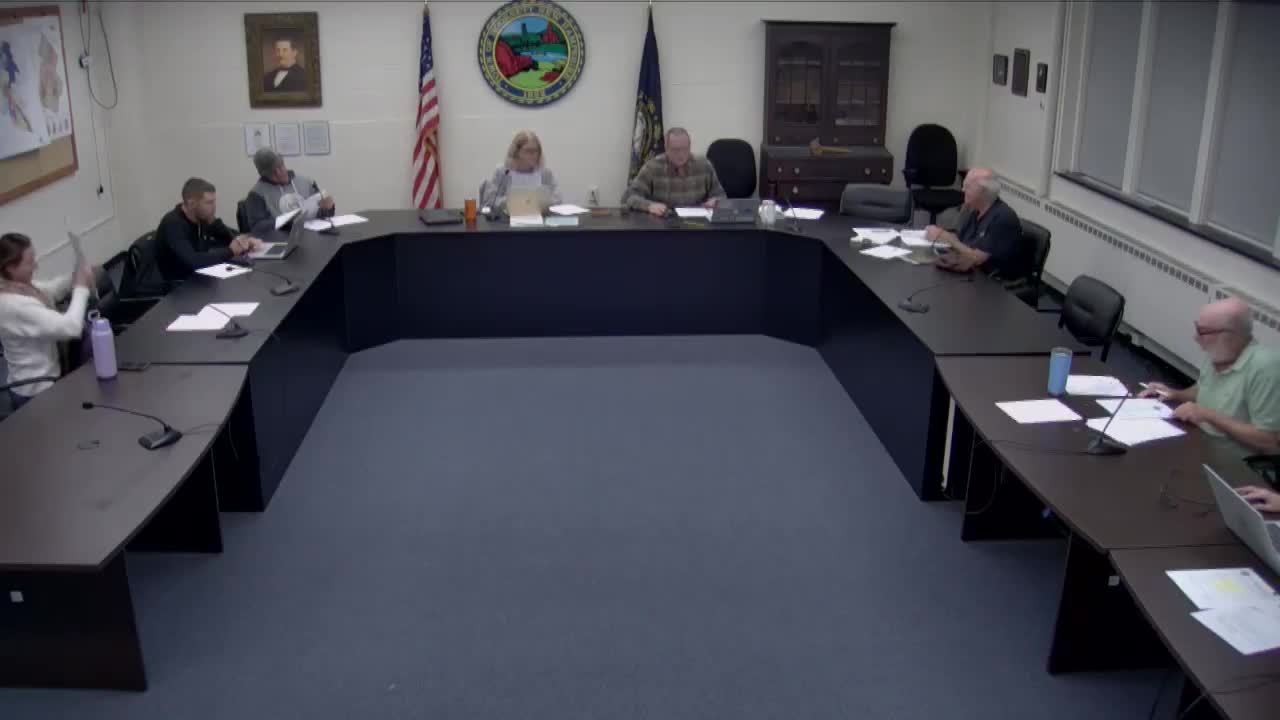Hooksett conservation commission tables review of after‑the‑fact wetland restoration at 325 Hackett Hill Road
November 10, 2025 | Hooksett, Merrimack County , New Hampshire
This article was created by AI summarizing key points discussed. AI makes mistakes, so for full details and context, please refer to the video of the full meeting. Please report any errors so we can fix them. Report an error »

Damon Burt of Fraggle Rock Environmental told the Hooksett Conservation Commission on Nov. 11 that work to restore wetlands at 325 Hackett Hill Road has been completed and submitted for monitoring to the New Hampshire Department of Environmental Services (DES). Burt said Fraggle Rock produced an initial wetland restoration monitoring report after DES’s June approval and that the restoration involved removing imported gravel/fill, stabilizing exposed soils, seeding, and preparing to plant shrub and tree species in the spring.
The commission’s concern centered on whether the current mitigation plan differs from an earlier, planning‑board–approved design. Burt said DES’s file documents the restoration approval and a timeline (DES approval and a September completion target were cited), and that his firm submitted an after‑the‑fact DES filing (file number cited in the meeting packet). He described on‑site challenges: substantial shallow groundwater and ponding in parts of the site, culvert elevation work, and the need to “dial in” final elevations so the restored area functions as a wetland rather than a pond. “Our intent is not to create a pond there,” Burt said, describing the goal as establishing a shrub/forested wetland and encouraging native species such as red maple to recolonize.
Several commissioners pressed for additional technical information (historic hydrology, soil/hydrology pit tests, watershed calculations) and for documentary context showing what the owner originally proposed and what the planning board approved. One commissioner said the current mitigation appeared to be a response to after‑the‑fact disturbance and asked members to review the original plan set and planning‑board minutes before offering formal comments to planning or zoning. That commissioner said: “It feels to me like they told us one thing, asked for something, we approved a plan, they did something else, and now they have a mitigation plan.”
Rather than issue immediate advice, the commission voted to table its formal recommendation and review the original planning‑board plan set and minutes at its Dec. 8 meeting so members can compare the two plans and provide informed comments to the planning board and, if applicable, to zoning on the conditional‑use/permit materials. Commissioners also flagged follow‑up items for the applicant and contractor: supply any hydrology/soil tests that exist, confirm monitoring and follow‑up visits through at least two growing seasons (2026–2027), and clarify which party will perform the required monitoring under the DES permit.
Next steps: Conservation commission members will obtain and review the original planning‑board materials and the minutes of the meeting that approved the earlier plan. The applicant was told conservation will prepare comments for both planning and zoning as needed and that Fraggle Rock or the landowner may attend upcoming meetings for clarifying questions.
The commission’s concern centered on whether the current mitigation plan differs from an earlier, planning‑board–approved design. Burt said DES’s file documents the restoration approval and a timeline (DES approval and a September completion target were cited), and that his firm submitted an after‑the‑fact DES filing (file number cited in the meeting packet). He described on‑site challenges: substantial shallow groundwater and ponding in parts of the site, culvert elevation work, and the need to “dial in” final elevations so the restored area functions as a wetland rather than a pond. “Our intent is not to create a pond there,” Burt said, describing the goal as establishing a shrub/forested wetland and encouraging native species such as red maple to recolonize.
Several commissioners pressed for additional technical information (historic hydrology, soil/hydrology pit tests, watershed calculations) and for documentary context showing what the owner originally proposed and what the planning board approved. One commissioner said the current mitigation appeared to be a response to after‑the‑fact disturbance and asked members to review the original plan set and planning‑board minutes before offering formal comments to planning or zoning. That commissioner said: “It feels to me like they told us one thing, asked for something, we approved a plan, they did something else, and now they have a mitigation plan.”
Rather than issue immediate advice, the commission voted to table its formal recommendation and review the original planning‑board plan set and minutes at its Dec. 8 meeting so members can compare the two plans and provide informed comments to the planning board and, if applicable, to zoning on the conditional‑use/permit materials. Commissioners also flagged follow‑up items for the applicant and contractor: supply any hydrology/soil tests that exist, confirm monitoring and follow‑up visits through at least two growing seasons (2026–2027), and clarify which party will perform the required monitoring under the DES permit.
Next steps: Conservation commission members will obtain and review the original planning‑board materials and the minutes of the meeting that approved the earlier plan. The applicant was told conservation will prepare comments for both planning and zoning as needed and that Fraggle Rock or the landowner may attend upcoming meetings for clarifying questions.
View full meeting
This article is based on a recent meeting—watch the full video and explore the complete transcript for deeper insights into the discussion.
View full meeting
